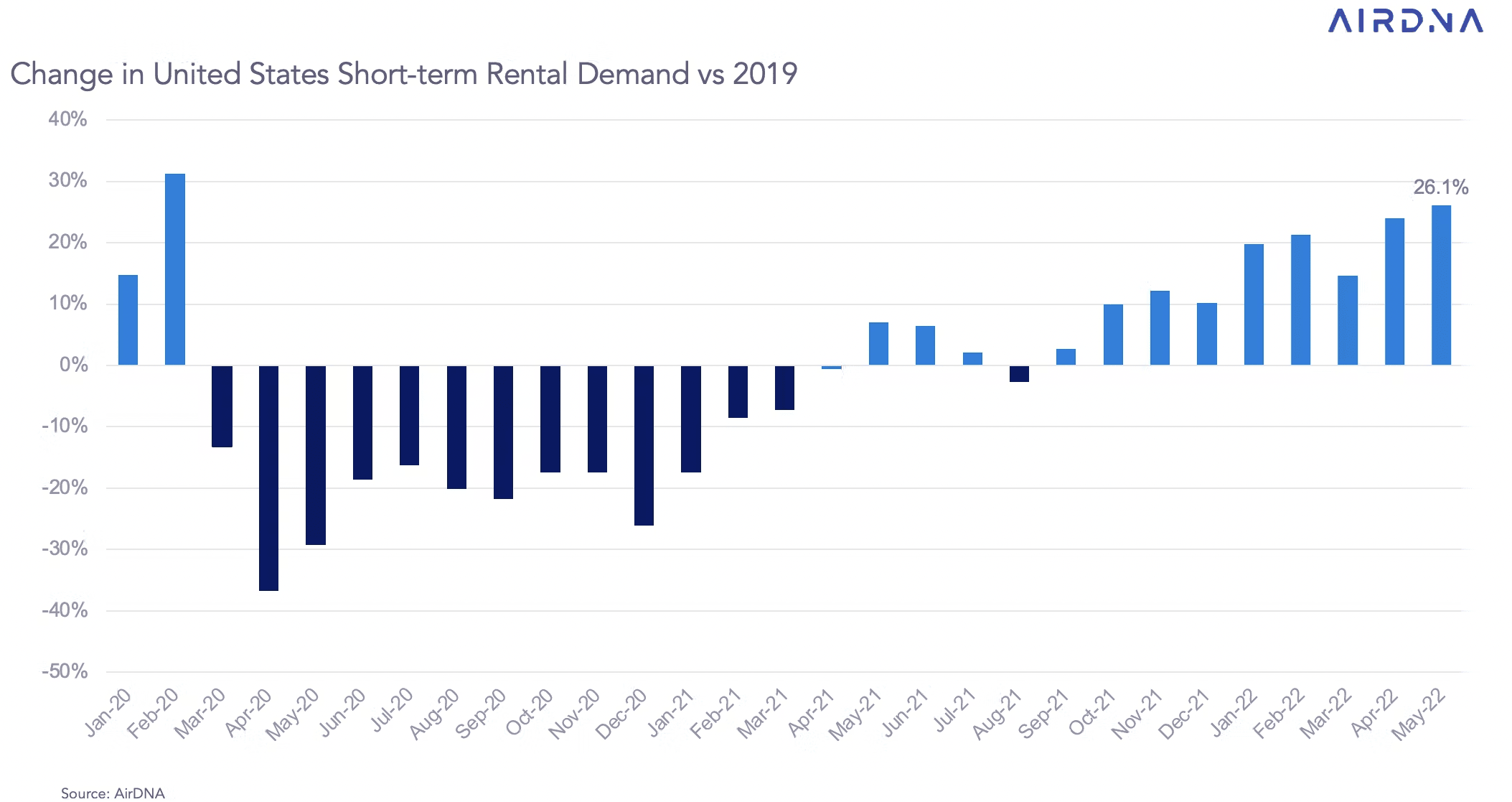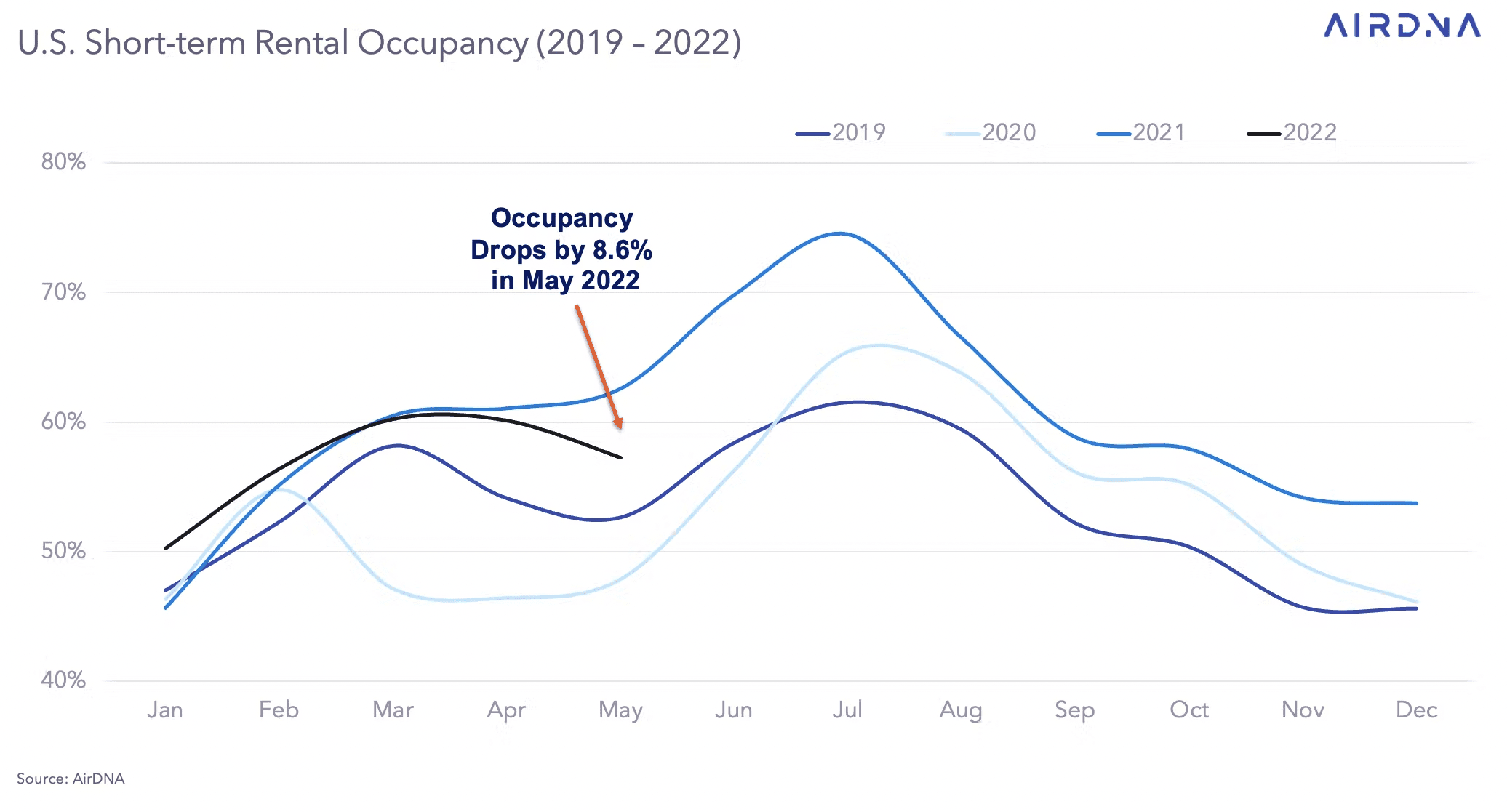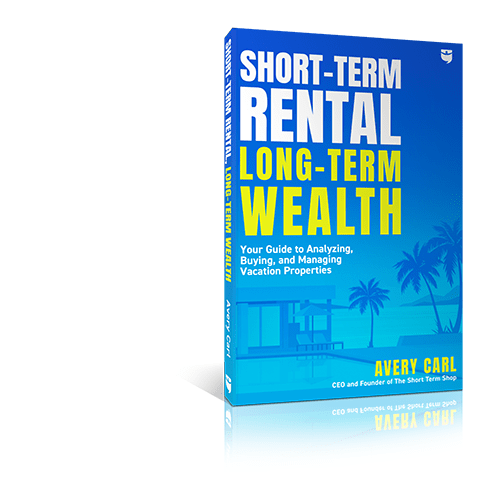One of the biggest talking points of the last couple of years has been the gap between supply and demand in nearly every industry, from real estate to energy.
Inflation hit 8.6% in May, according to the latest CPI report and gas prices spiked to a record average of $5 and over across all U.S. states for the first time as the cost of an oil barrel climbs to $120. Broken supply chains have caused catastrophic supply and demand issues in nearly every sector of the economy, giving us the perfect storm of inflation.
However, despite the outlook, AirDNA’s May Review indicated that supply, at least in the short-term rental market, might finally be catching up with demand.
Occupancy Falls By 8.6% As 84,000 Listings Are Added
In data generated by both Airbnb and VRBO, 84,000 new short-term rental listings were added to the market, creating a 57,000 net increase after removing closed listings.
In total, there are roughly 1.3 million listings available for rent in the United States, which is up nearly 25% year over year. This marks a record high for total available listings in the U.S.
While demand has been extremely high, especially as some reports suggest that this will be a hectic traveling summer, occupancy fell to 60.2% in May.

While there doesn’t seem to be any worrisome signs to keep an eye on just yet, falling occupancy rates aren’t exactly an STR investor’s favorite statistic. Yes, listings were added month over month, but if demand is as high as it is, then you wouldn’t expect a sharp near 10% decline in occupancy heading into the busy season. Instead, occupancy is mirroring 2019s numbers more than 2021, for better or worse.

The fact of the matter is that supply outpaced demand in the short-term rental market, despite this summer supposedly being the season of “revenge travel,” as some pundits have labeled it.
But when we consider the larger factors at play in the economy: high inflation, expensive gas, expensive goods, expensive flights, and a Fed determined to slow down inflation with historic interest rate increases. These are signs that the brakes need to be pumped on the economy, and it’s already starting. Typically, travel slows down with the brakes.
Understanding the American Consumer
In a survey conducted by Credit Karma in May, 51% of Americans reported that their financial situation was worse off than it was at the beginning of the pandemic. However, 30% of Americans plan to spend more money this summer.
Even more concerning, but adding to the surprising rationale, is that almost 33% of Americans reported taking on debt to afford rising gas prices. Yet, 22% said that they were planning to spend an extra $1,000 more than their typical budget.
Why? Why do Americans, who are feeling tremendous financial pressure from a variety of directions, feel the need to bloat their travel budgets?
It turns out it has to do with making up for lost time (33% of respondents), taking advantage of normal life again (38%), and the fear of missing out (25%). While living life to the fullest is not bad, there are real barriers to travel that can and will prevent someone from going somewhere if it will result in financial instability when they get home.
This is where short-term rental investors or prospective short-term rental investors need to be careful.
A Warning for Short-Term Rental Investors
I’m not ringing the alarm bells and signaling the end of times. I’m just being cautious about a lot of the news and reports coming out.
While short-term rentals are by no means in any jeopardy at the moment, in fact, STRs can be quite “interest-rate proof” during these times. I will say to be careful of the reports on travel and a booming season.
STRs are rapidly expanding and continue to boast growth. Nor has supply met demand nearly enough to justify lowering prices. But there is a looming recession and clear indications that many U.S. consumers are falling behind in their finances. When you put these two together, one of the first budget items to get cut is travel, regardless of how much people want to get out and about. That’s just how economics work.
As an investor, you should be prepared for the worst. In this case, low occupancy due to a recessionary environment. Depending on your market and the type of rental you’re operating, occupancy varies with the seasons. Do what’s best for your business in the long term. Be prepared for economic fallout and changing STR laws (many local governments have turned their attention towards making it harder for STRs to operate in order to create more housing availability).
Don’t allow yourself to be blindsided. Many investors have enjoyed the short-term rental growth sparked by the pandemic. But now, times are changing again, and we must be prepared for what’s to come, good or bad.

Ready to invest in short-term rentals?
From analyzing potential properties to effectively managing your listings, Short-Term Rental, Long-Term Wealth is your one-stop resource for making a profit with short-term rentals!